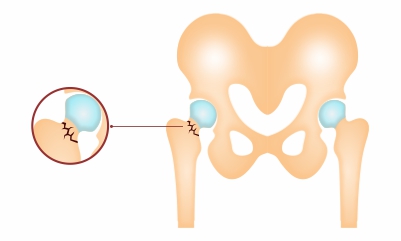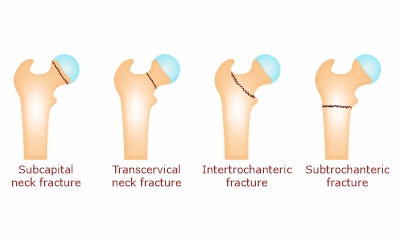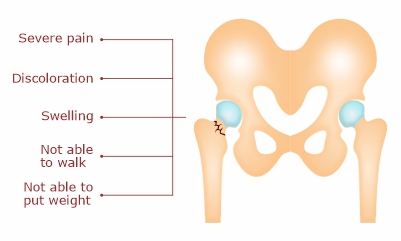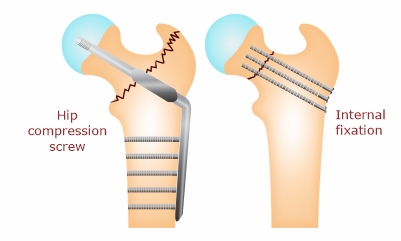Hip Fracture

The femur (upper part of the thigh bone) and pelvis ( part of the hip bone) connect together and make a hip joint. In hip fracture, the upper part of the femur bone gets broken.
Fracture of hip is a serious and emergency condition and it can be life-threatening. Mostly hip fracture cases need surgical management.
Types of Hip fracture
In vast majority femoral head breaks. Other sites of fractures include:
- Fracture neck femur: The Thighbone (femur) is a long bone and has many parts, the femoral neck is one of them ( just below the ball/head ). In neck femur fracture, the upper part (neck) of the femur bone breaks. This fracture can compromise the blood supply to the hip joint.
- Intertrochenter fracture (hip): Trochanter is a tubercle shape structure present at the bone (End of the femoral neck). When a fracture occurs in trochanter is known as intertrochanteric fracture.
- Intracapsular fracture: When the ball and the socket of hip joint break, it is called an intracapsular fracture.

Causes
- Severe dashboard injury or car accident
- fall from height or on a hard surface
- Direct trauma to hip joint
- Disease like osteoporosis
- Excess weight puts overpressure on the hip bones and joint.
Risk factors
- Previous history of a fractured hip
- Females are more prone to have hip fractures because females are more likely to have osteoporosis after menopause.
- Older people especially those over 60 years are more prone because bone strength and density both reduce with age. Older people are more likely to have fallen due to balance problems and visual defects.
- Malnutrition like vitamin d deficiency, lack of calcium.
Symptoms
- Severe pain in the groin area, hip, and upper thigh
- The fractured leg looks short in comparison to the normal leg
- Not able to put weight on the fractured hip
- Not able to walk from the fractured hip
- Swelling around hip
- Discoloration over the skin

Diagnosis
- Physical examination and symptoms are important to make a diagnosis
- X-ray provides the location of hip fracture and its severity
- MRI or CT scan is prescribed if the diagnosis is doubtful

Treatment
- Medication helps in pain reduction
- Plaster cast applied in cases of non-severe fractures and treated conservatively. But in most
- cases surgery needed
- Surgery Surgery prescribed according to the type and severity of the fracture, and collateral damage.
-
- Internal repair with screws and plate
- Partial replacement of the hip
- Complete or total replacement of the hip
-
When there is a complete absence of blood supply to the joint, total hip replacement is the last resort.
